Meters. Have you ever contemplated meters? Meters, gauges and monitoring systems, are everywhere in our Net Zero lives. Every morning, on my way out the back door to feed the chickens, I walk by our three, 3,ooo gallon rainwater storage tanks. A gauge with orange and green hands sits on the center one in full sight. It tells us how close we are to full or empty. It quantifies our relationship to climate in inches and gallons, in downpours and droughts. If metering helps us pay better attention to water cycles, we will see the wildfires and pollution that go with lack of water; the floods and asthma that always impact most severely communities of color and those already living on the edge. It gives us a metric to act more wisely. It’s about how much is enough and when enough is enough.
I have debated with myself over whether to post this blog right now. Our streets and national conscience are on fire with protest that Black Lives Matter. I don’t want to trivialize that conversation with this one. Right now, this is not about water meters and paying attention to rain. It’s about body cams on police, bystander videos and the conscientious journalism that serve to meter the truth of racism and monitor our behavior so we can act for liberation and justice. Still, while we are quarantined at home, watching the news, going to protests and doing webinars to better understand what white people can do, we are also consuming water. And while doing all that, our President and his people are doing all they can to profit from the chaos and further ravage the living systems upon which all life depends. If there’s a connection between the conversations, they are both about metering our behavior and our relationships to the most precious gifts of Earth and the most endangered of humanity. And abusing Black Lives or water supplies gets the same result: it hammers those who are already hammered. If the “unexamined life is not worth living,” the un-metered life gives us little information about how we are behaving and what we need to change.
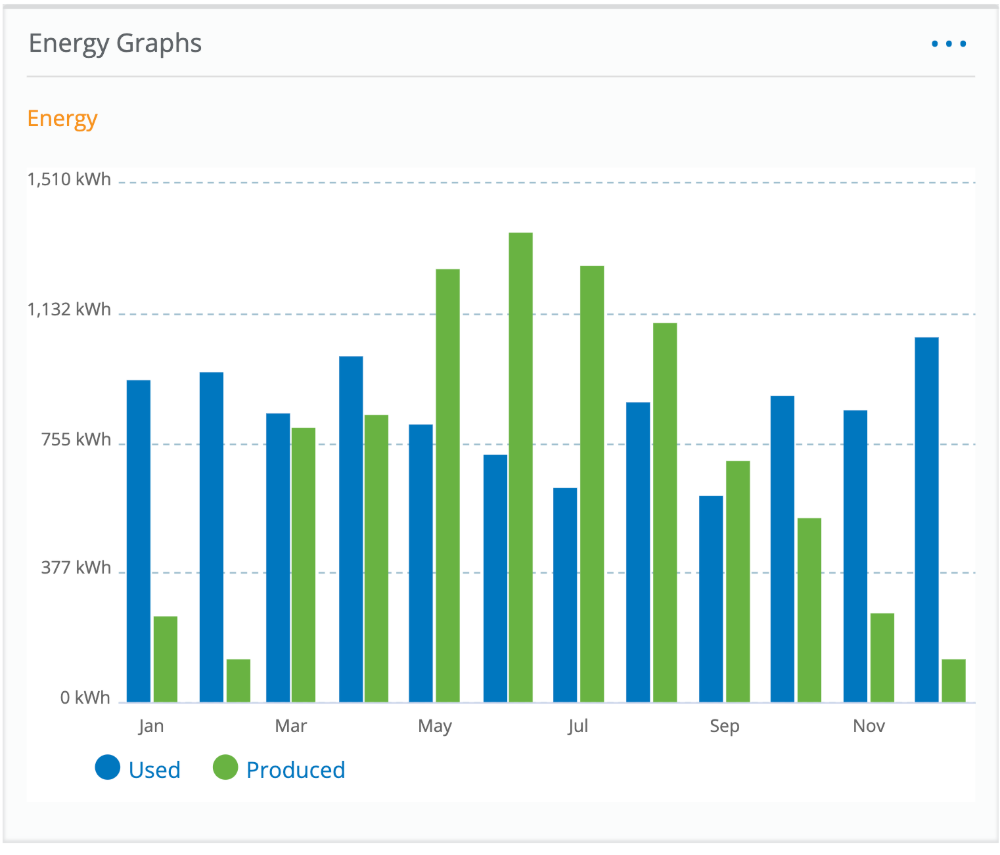
Metering and monitoring are about gauging the common good and how our consumption impacts our neighbors: the soil, water, air—the critters and their habitats and our human community. When we were designing our certified Passive House, our goal was to be Net Zero in energy use, to build a home, energy-efficient enough that a solar system on our roof would generate enough power not only to run our home but also to charge our electric car. And how do we know whether we are meeting our goal? A meter of course!
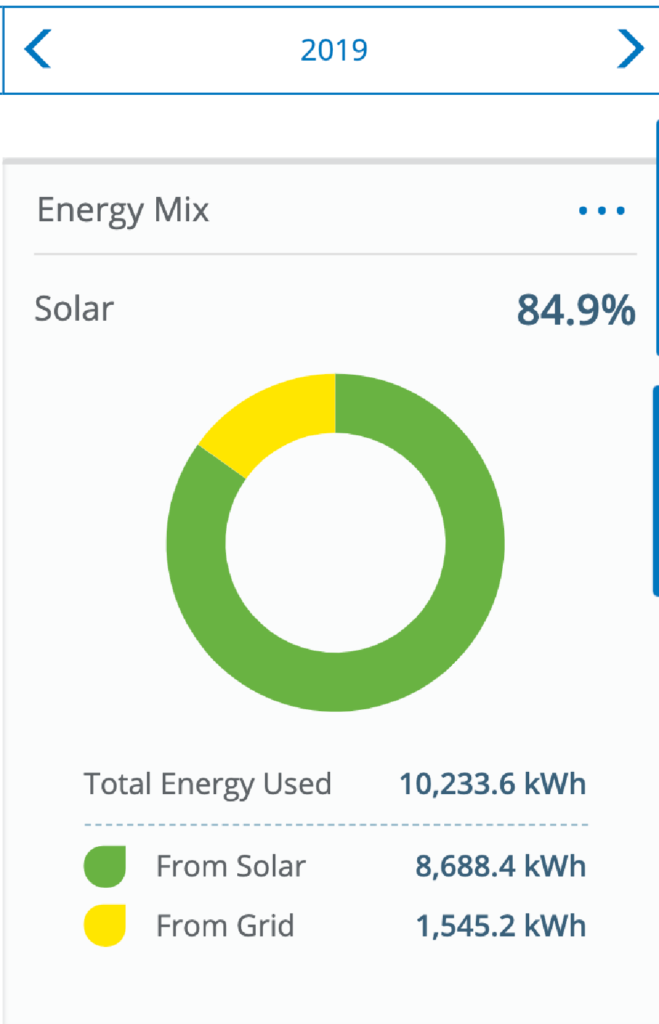
The blue bars show our energy use in 2019, month by month. The green bars are solar energy generation. 84.9% of our household and car use was supplied by the sun on an annual net basis. In a very graphic way this illustrates our morality. The blue bars are our real contribution of carbon emissions. They add to the over 416 ppm of CO2 in our atmosphere that is killing the Planet. The green bars show our effort to be faithful to justice and the common good. But let’s talk about water. If we are going to build for net zero energy, why not build for NET ZERO WATER? How do we meter for that?
Michael Martins and Oregon Rain Harvesting (oregonrainharvesting.com) built our system and here’s how it goes: the rain runs off our red metal roof to the gutter through the (550 micron) stainless steel micro-mesh screen atop our gutters, called Gutter Glove.
It runs down the gutters to the downspouts. The first several gallons pour into the First Flush system, which is the pipe directly below the downspout connection. When it hasn’t rained for awhile, the accumulation of dust and crow poop is washed down first and collected in the First Flush pipe, slowly leaking out onto the ground. Once that pipe is full, the cleaner water flows over that connection to underground pipes to the three 3,000 gallon tanks—-9,000 gallons of storage.
The three poly tanks sit in the back corner of our lot, now blocked from view by the greenhouse. The tops of all tanks are lower than the lowest gutter, so they fill and empty simultaneously by gravity.
A pump in the garage pressurizes the house system while pulling rainwater from the tanks. A polypropylene filter removes the finest residue. A charcoal filter scrubs out odors and bad taste. Then ultraviolet light kills any remaining pathogens, as the rain swirls around the UV bulb, flowing into the house for drinks, flushes, showers and clean clothes.
As the water year begins in October we watch, with eager anticipation, the hands on the tank gauge move from empty to full. In a normal year, the arrow stays on full, November through April. Since more than 40,000 gallons of rain will pour off our roof in a year, that means at least 25,000 gallons overflow the tanks during the winter, traveling through the underground drain pipe toward the street and the storm drains of the City. But we laid a drain line along the walk in front of our house, where we created a bioswale of native Oregon wetland prairie plants. So the pipe creates a detour into the wetland and little, if any, overflow ever reaches the street.
Between equinox and solstice, our little slice of prairie comes alive, awakening the purples of Oregon Iris and Camas, the bright yellows of Oregon Sunshine and Mule’s Ear, the pale pinks of Checkermallow and Nodding Onion amid the rushes, Romer’s Fescue and Tufted Hairgrass. It’s a remnant celebration of the prairie habitat that once thrived in this place along with the Kalapuya and their clans, hunting elk, cultivating Camas root and stewarding the waters.
The tank gauge approaches empty in early to mid-July, when we open the utility box holding the back flow apparatus that keeps our clean water from “contaminating” the city’s. A flip of two value handles and the chlorinated elixir flows back into our system. It tides us over for the last 3 months till the rains come again in October.
Michael Martins of Oregon Rain Harvesting, who made the system happen, is seen here on his annual maintenance visit, replacing the charcoal filter. Yea Mike. And thank you. But how do we track our water consumption?
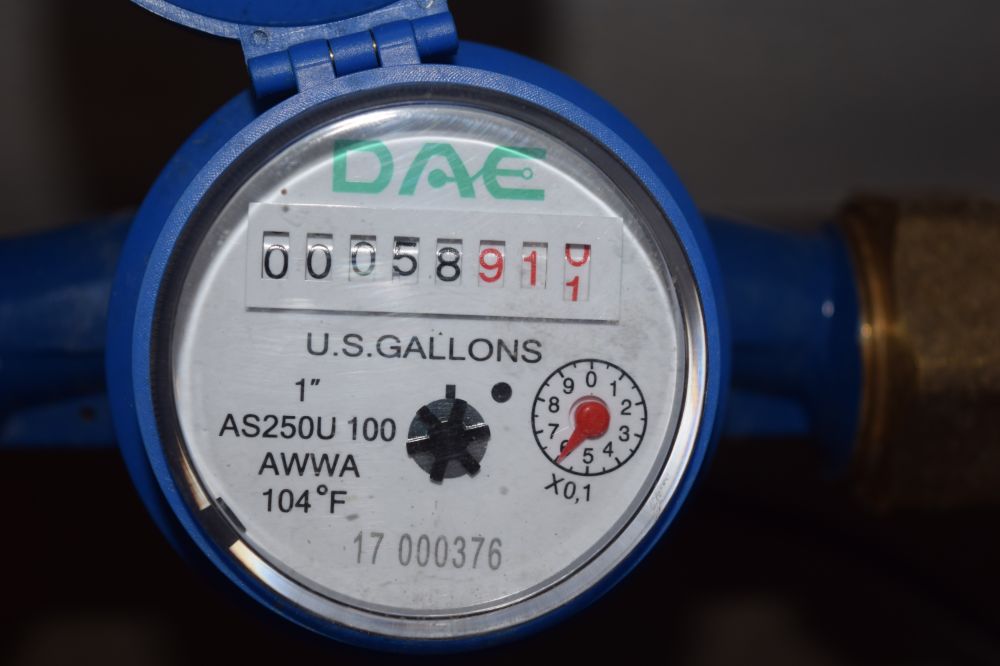
After the rainwater goes through the filters and UV light, before it enters the house, it passes through the meter that tells us exactly how much we are using. And what do we learn from that?
Stay tuned for the next blogpost: “Rainwater Chronicles Part 2: Why Catch the Rain?”

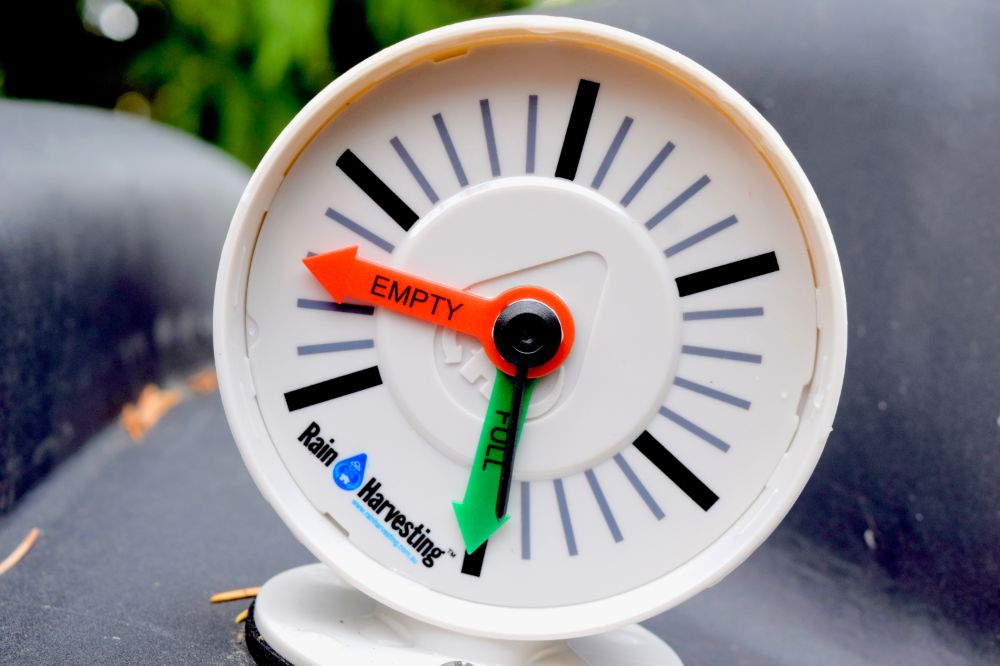
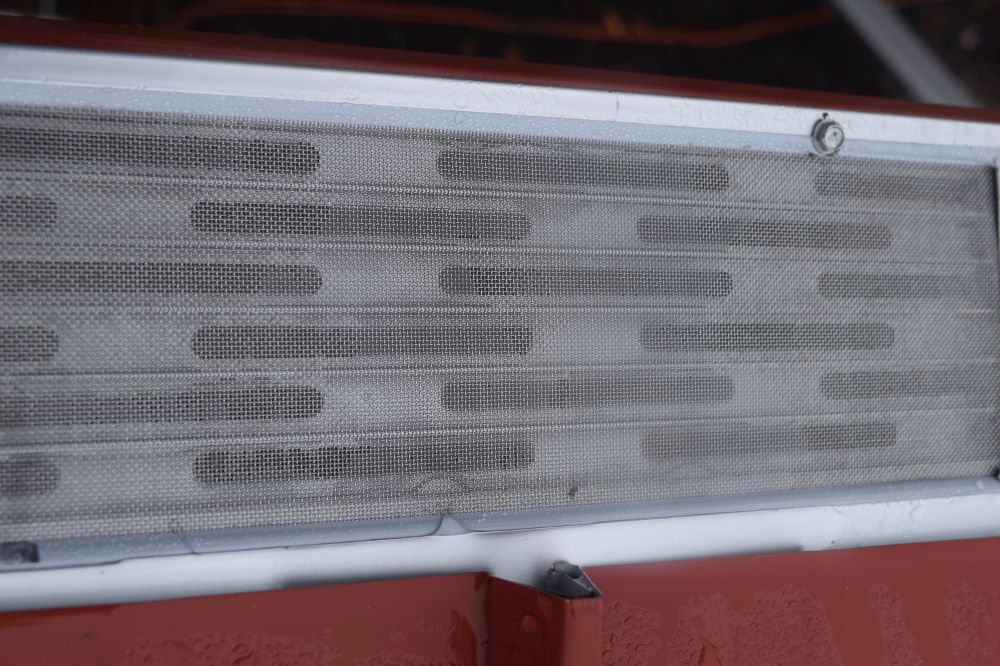

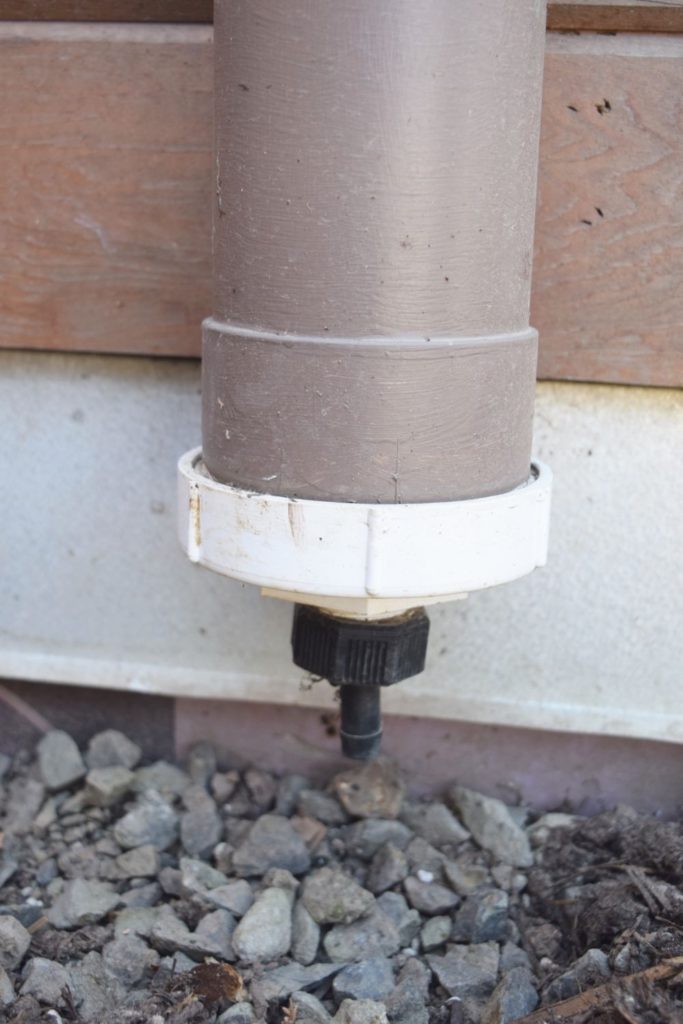
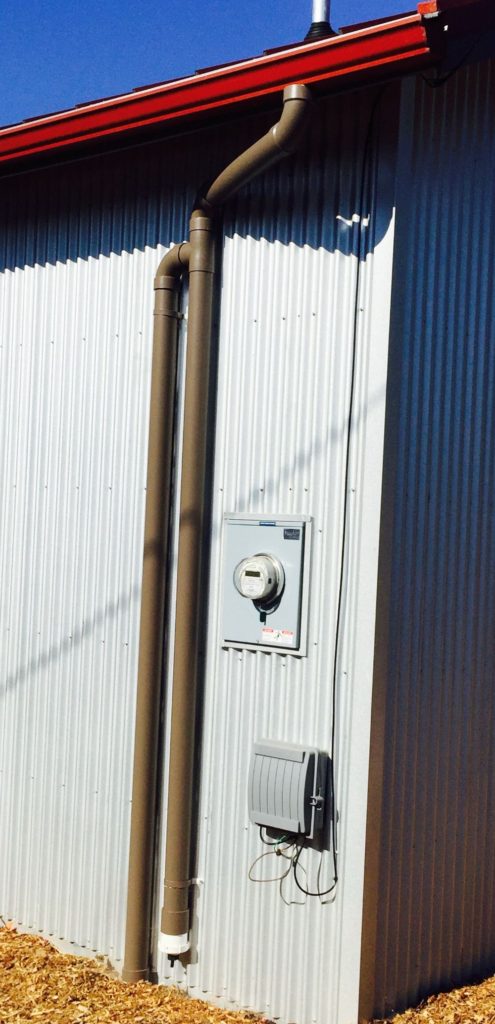
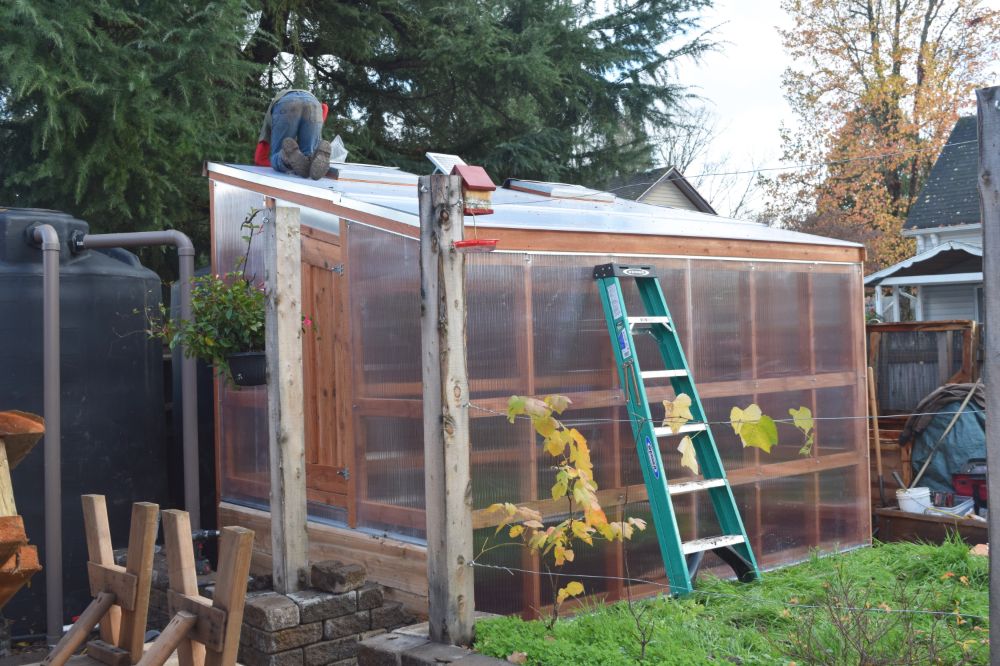
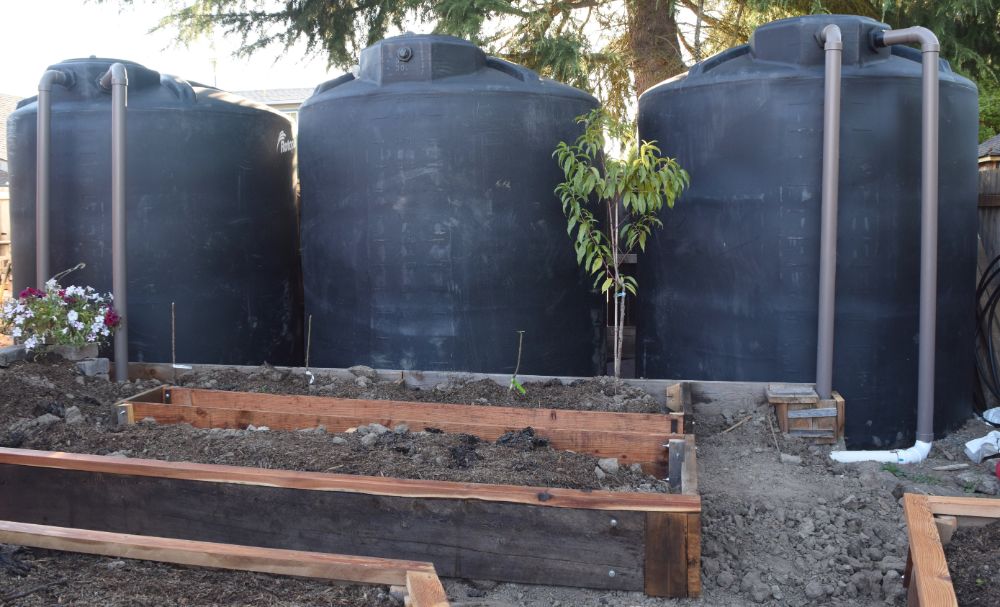

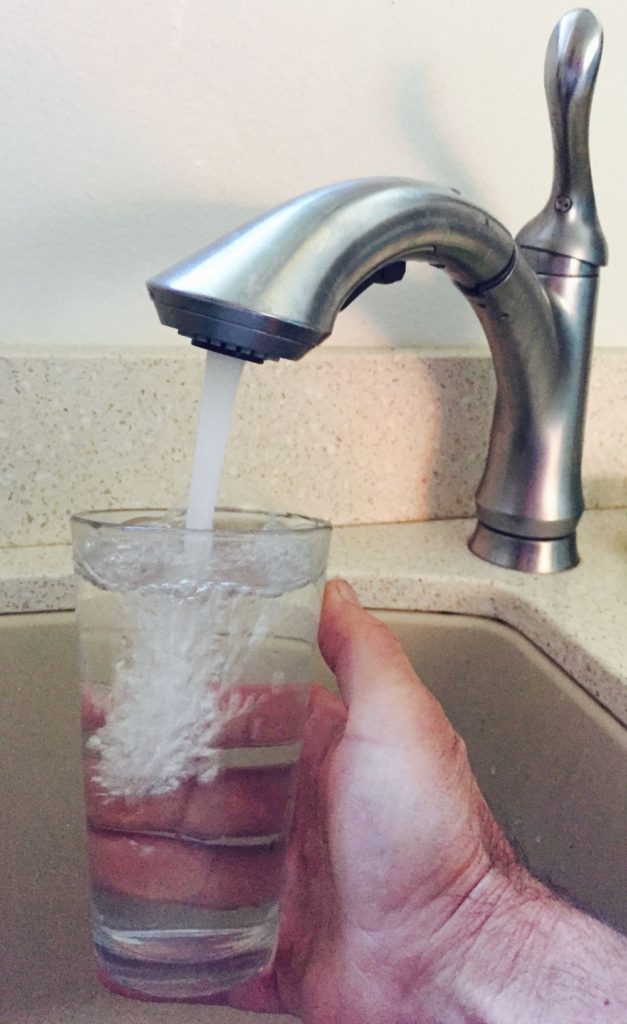

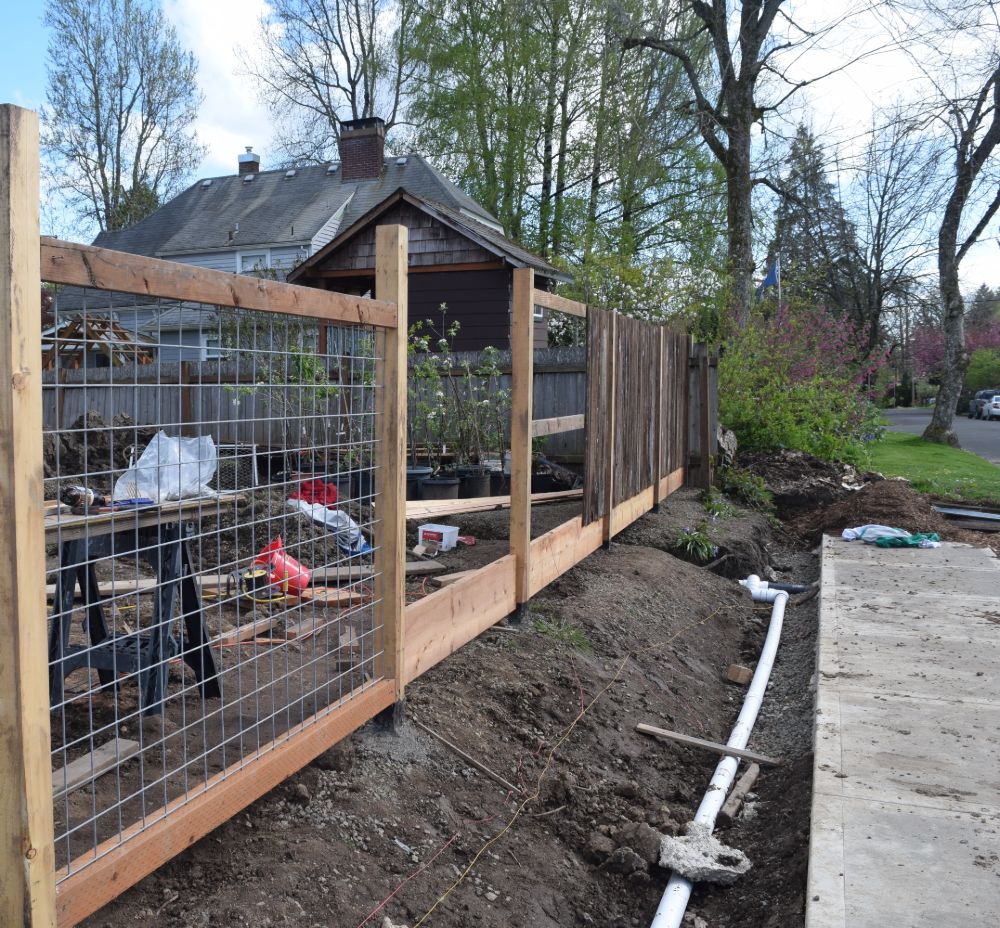

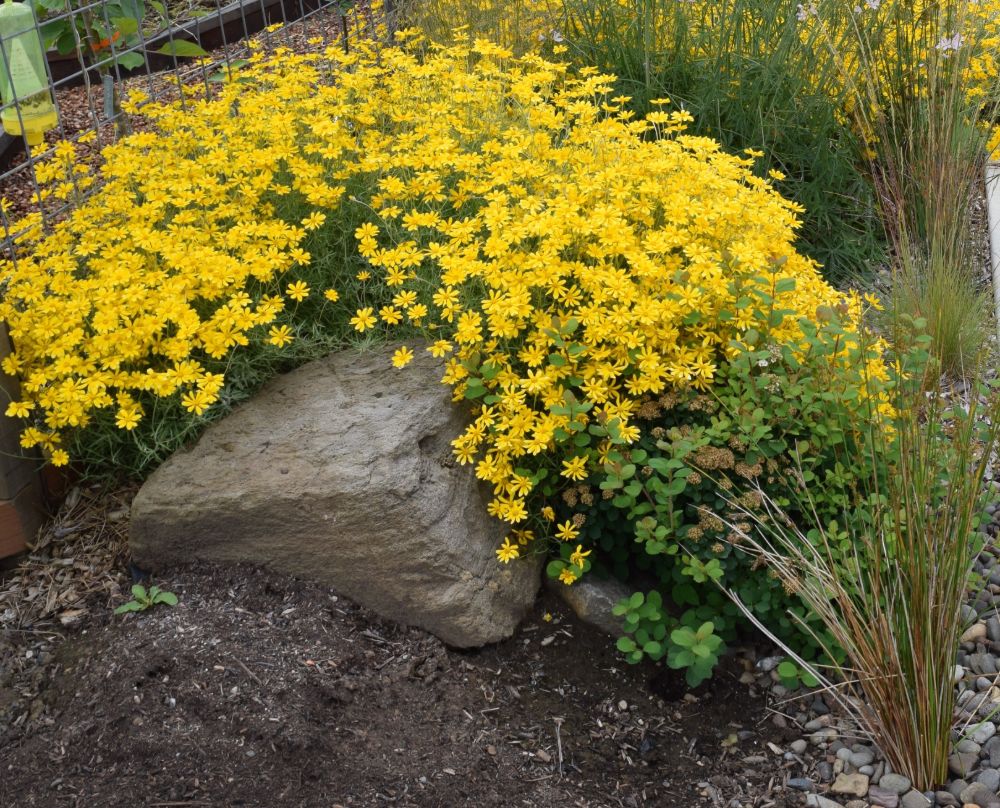
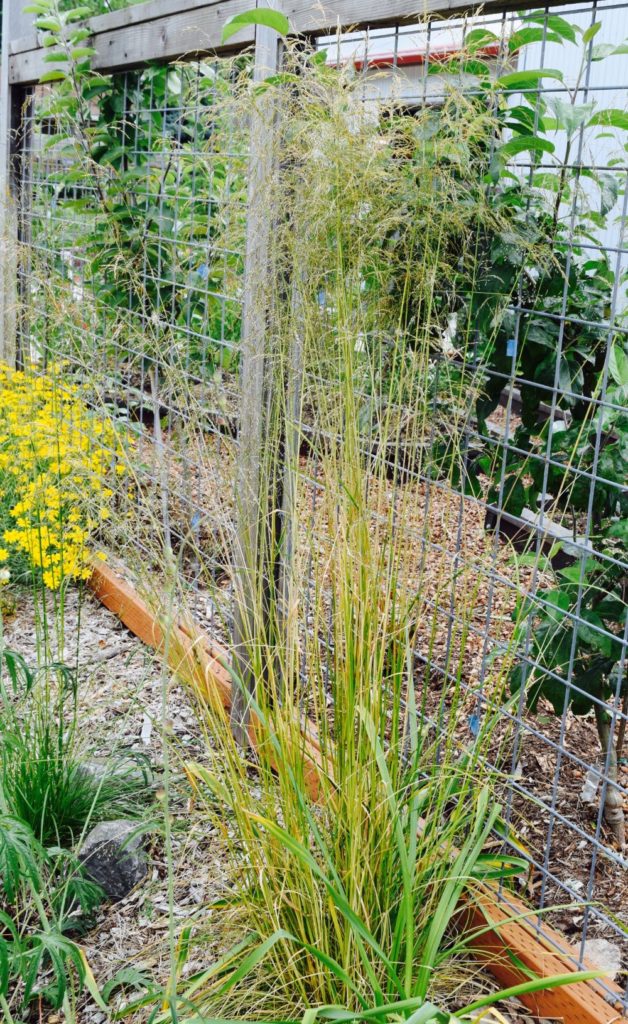
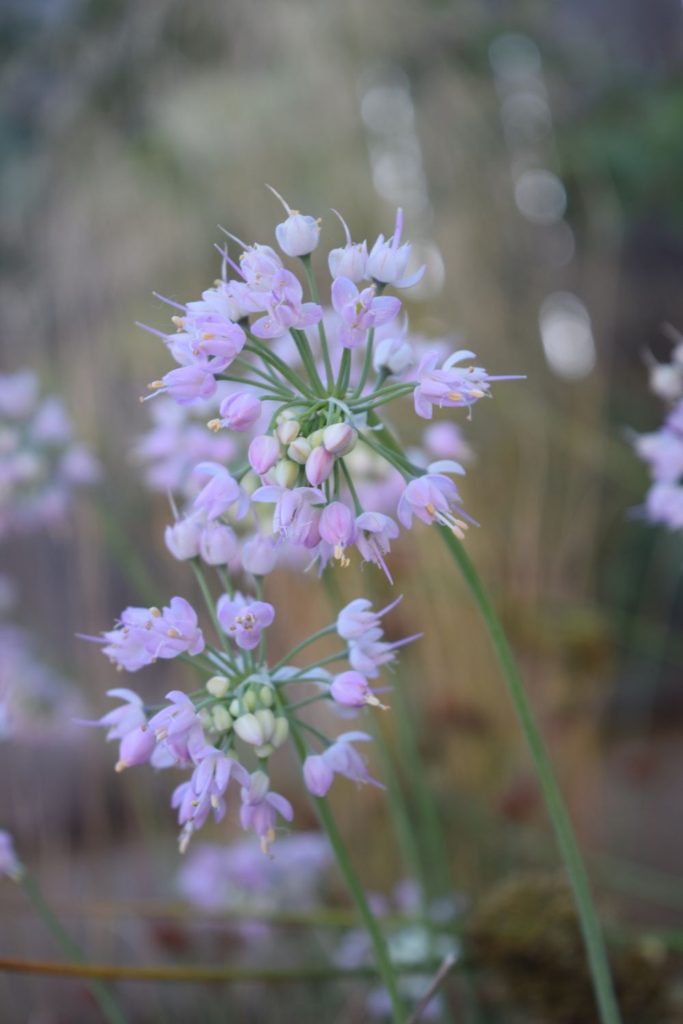

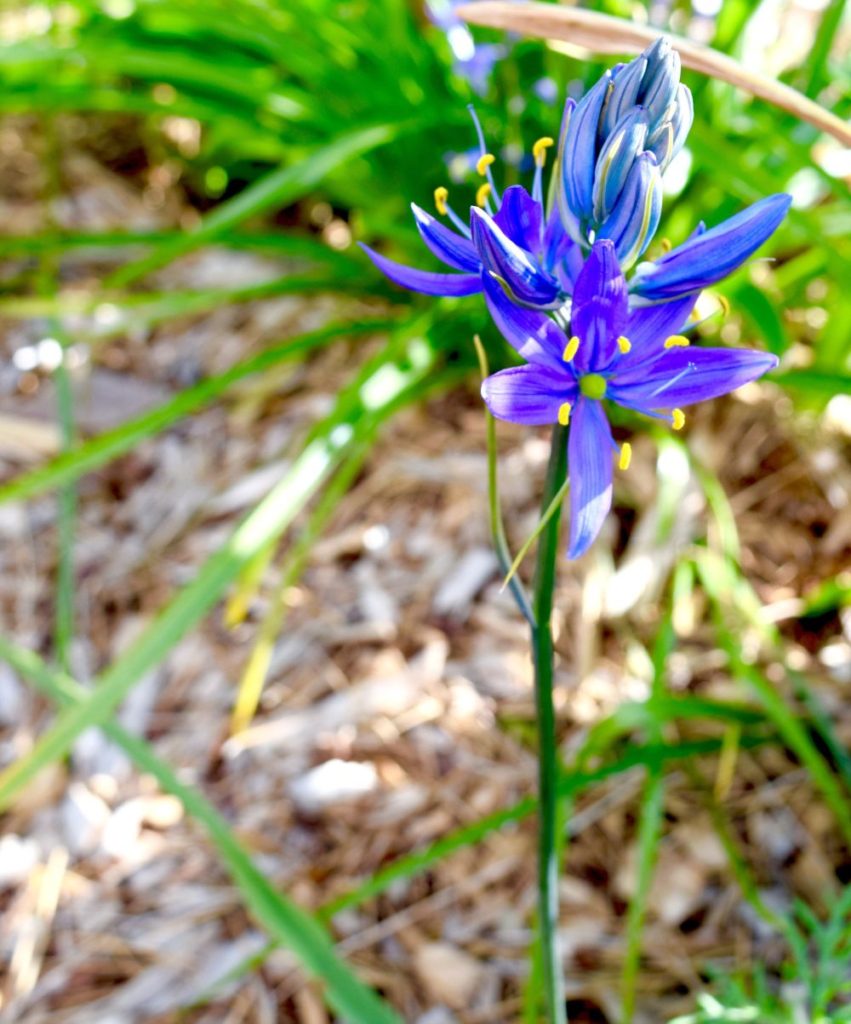


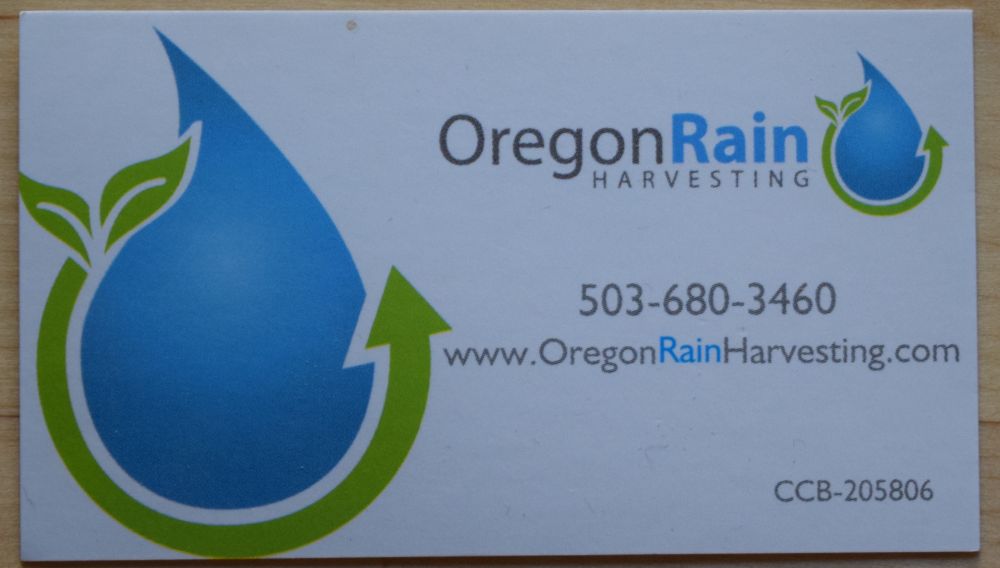
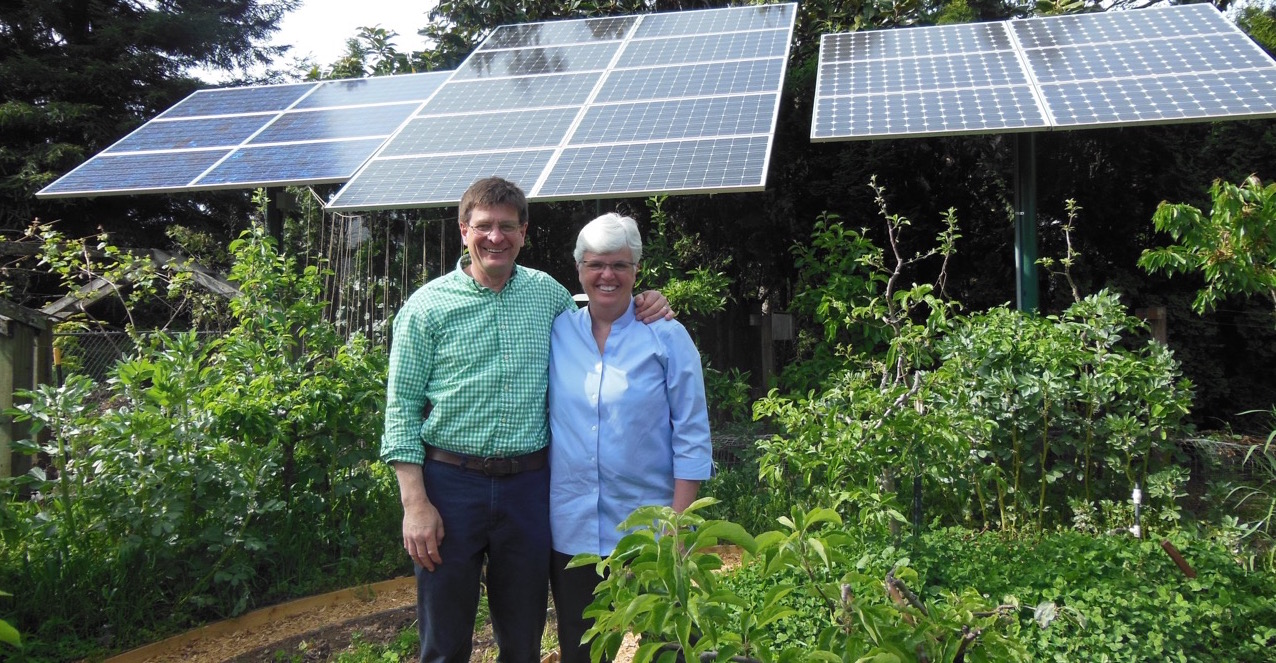


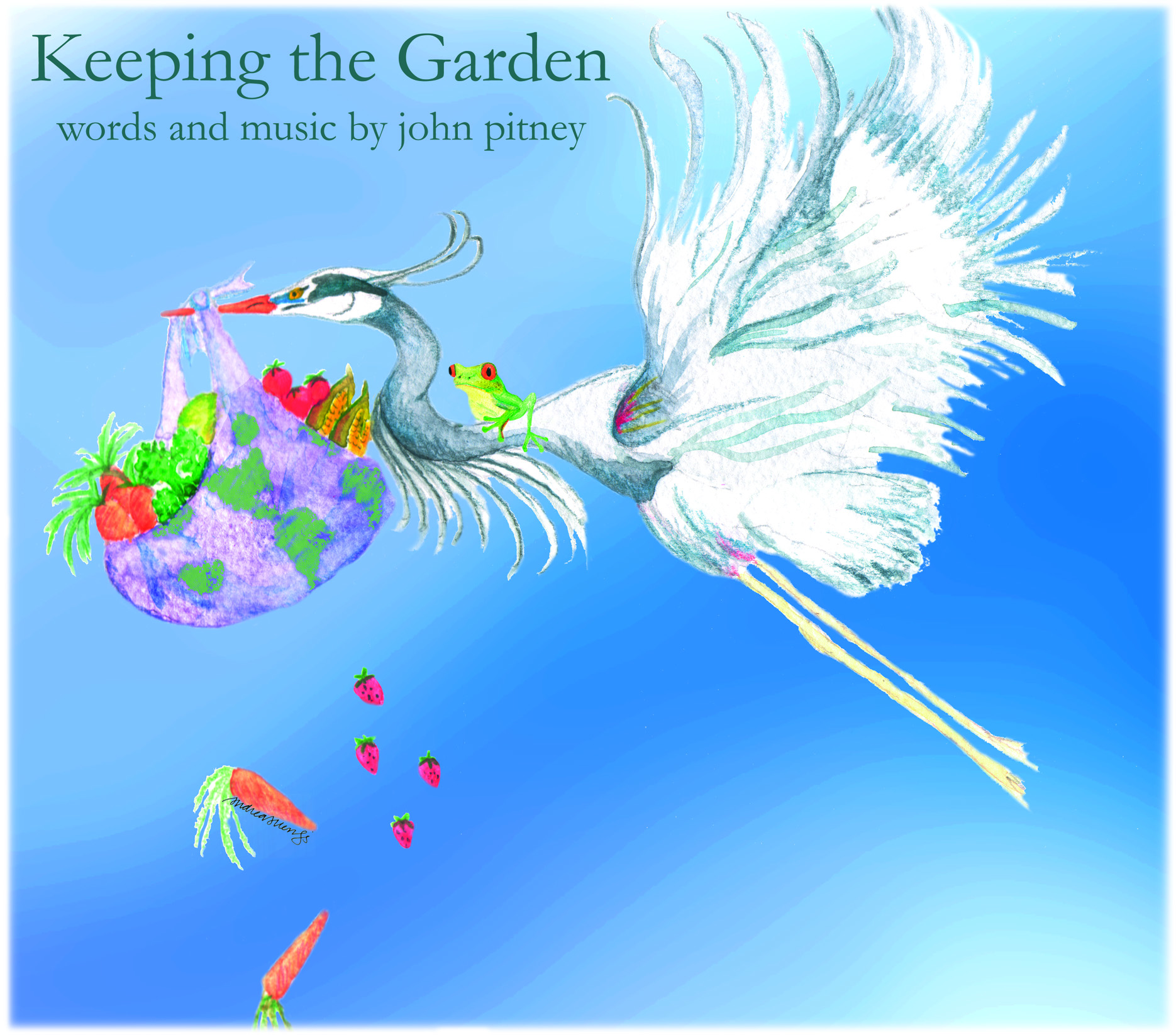

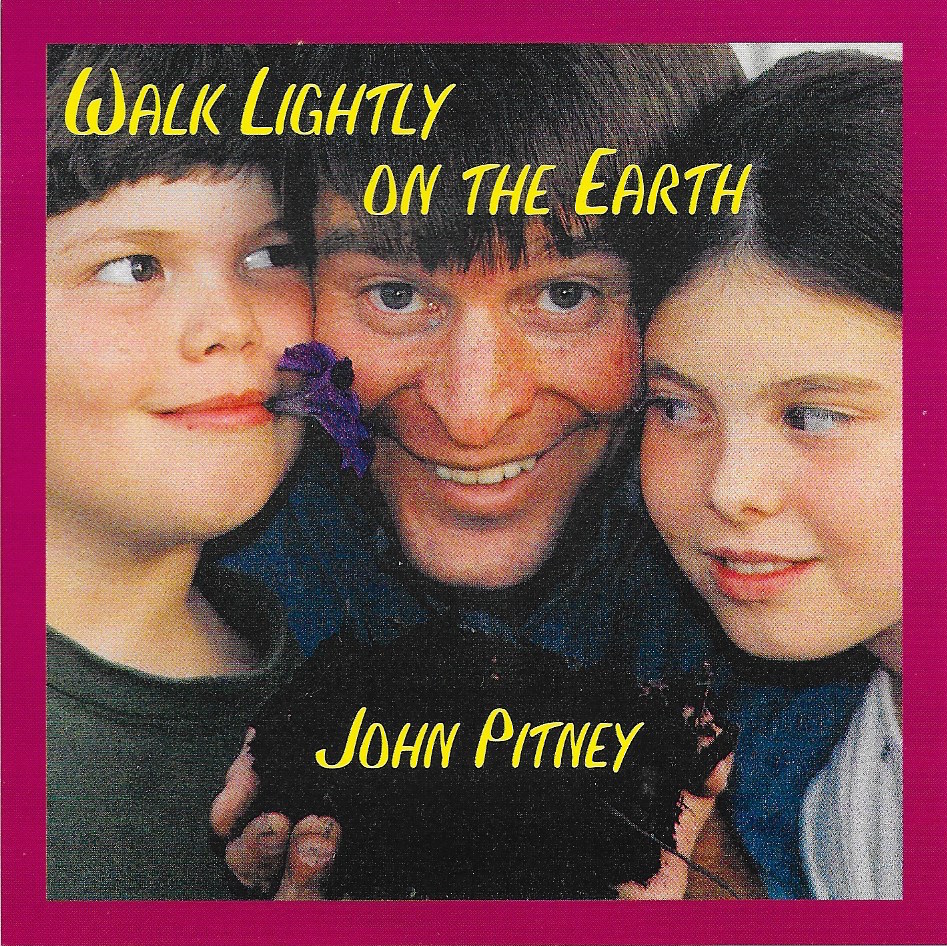

Thanks John. … Inspiring